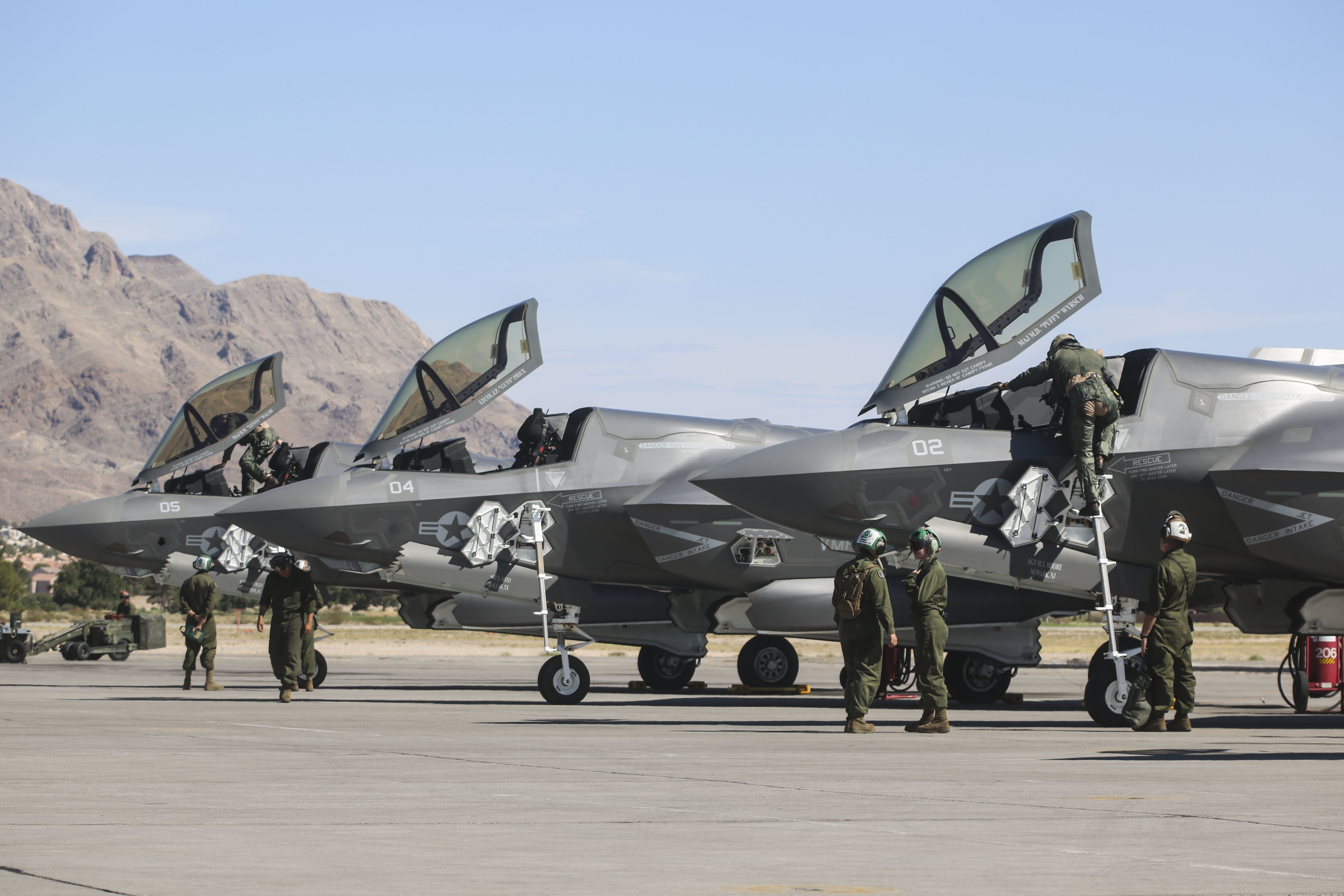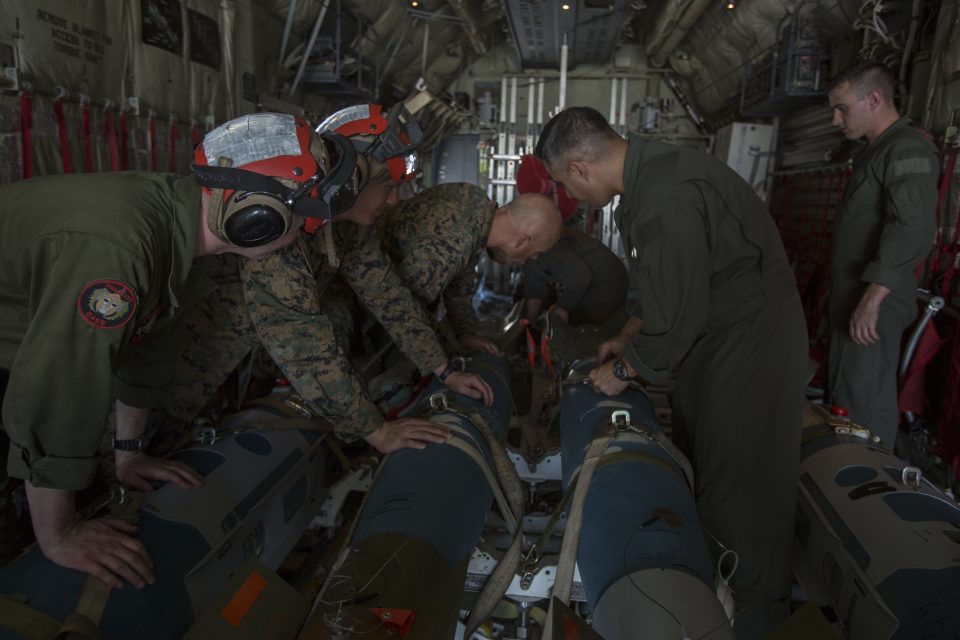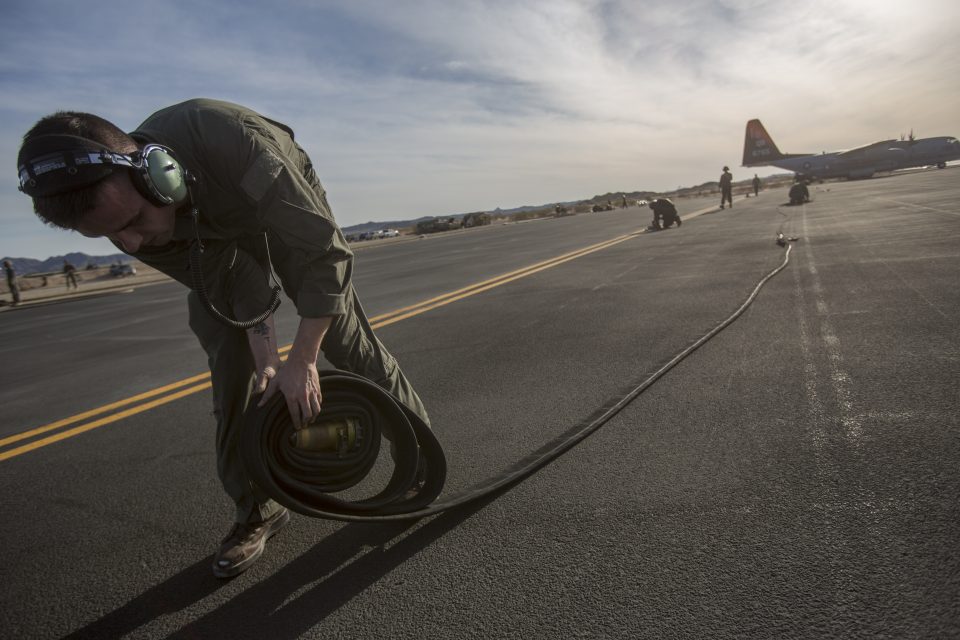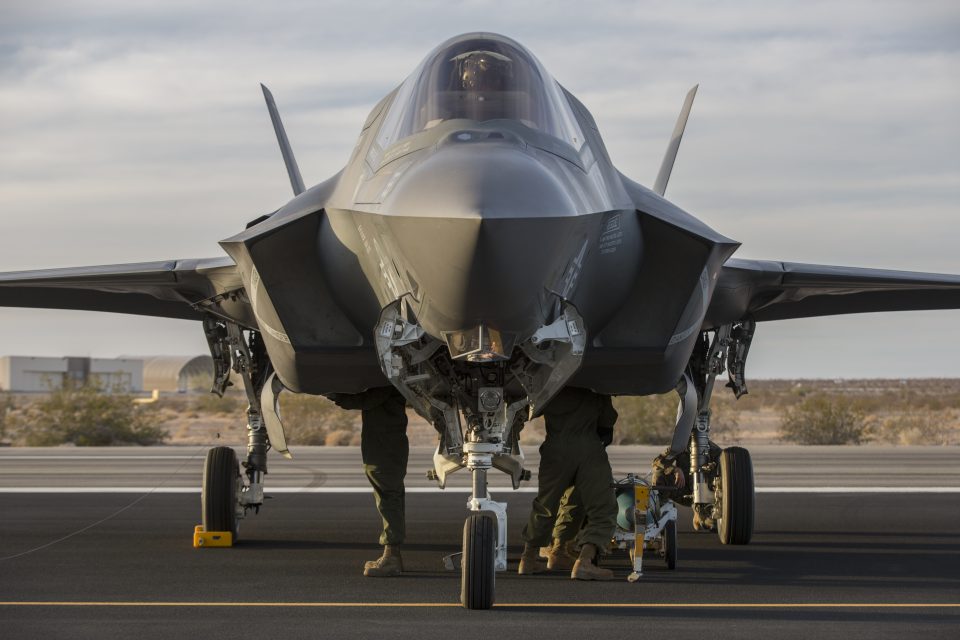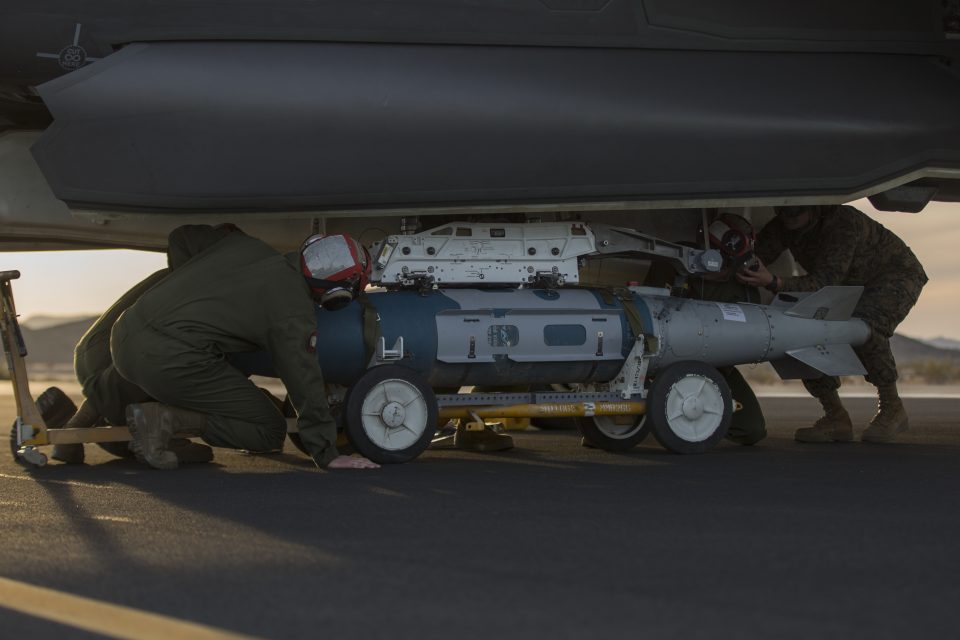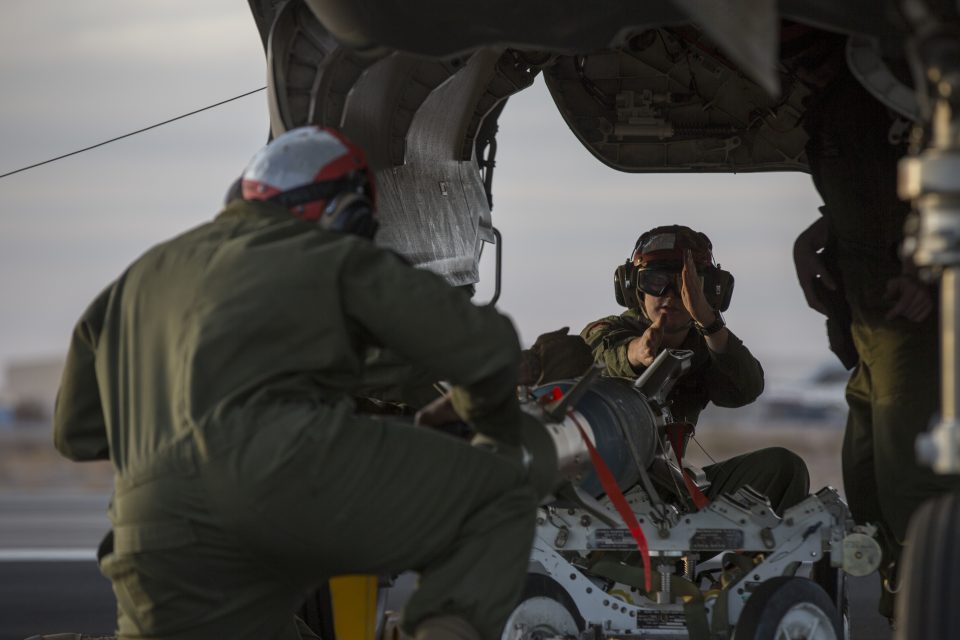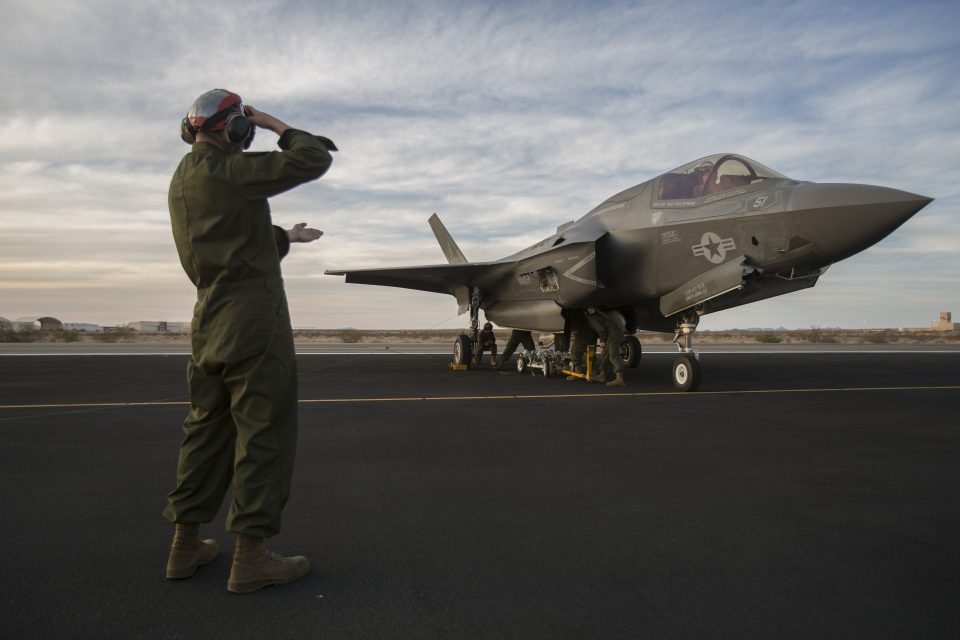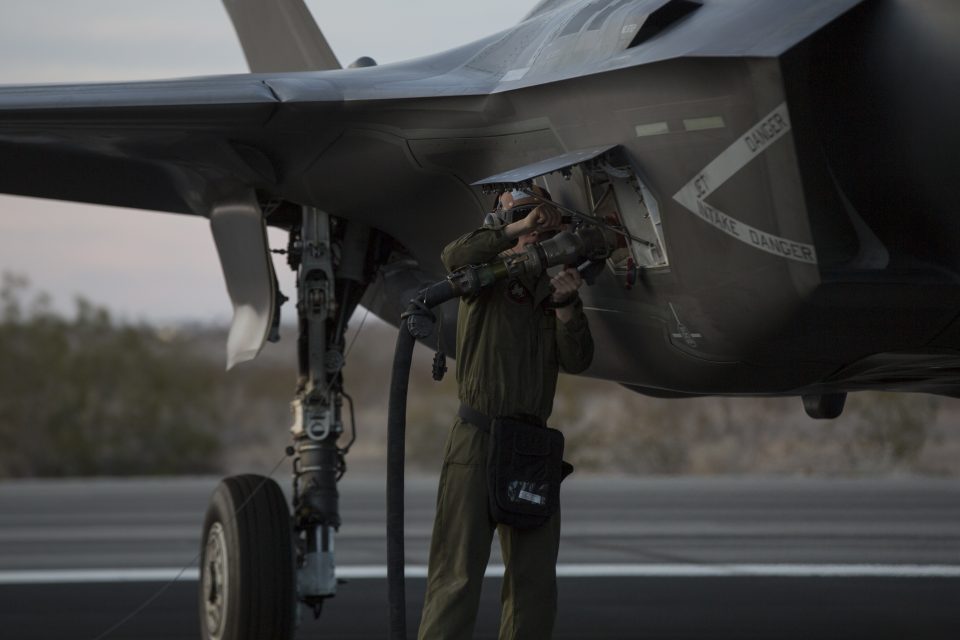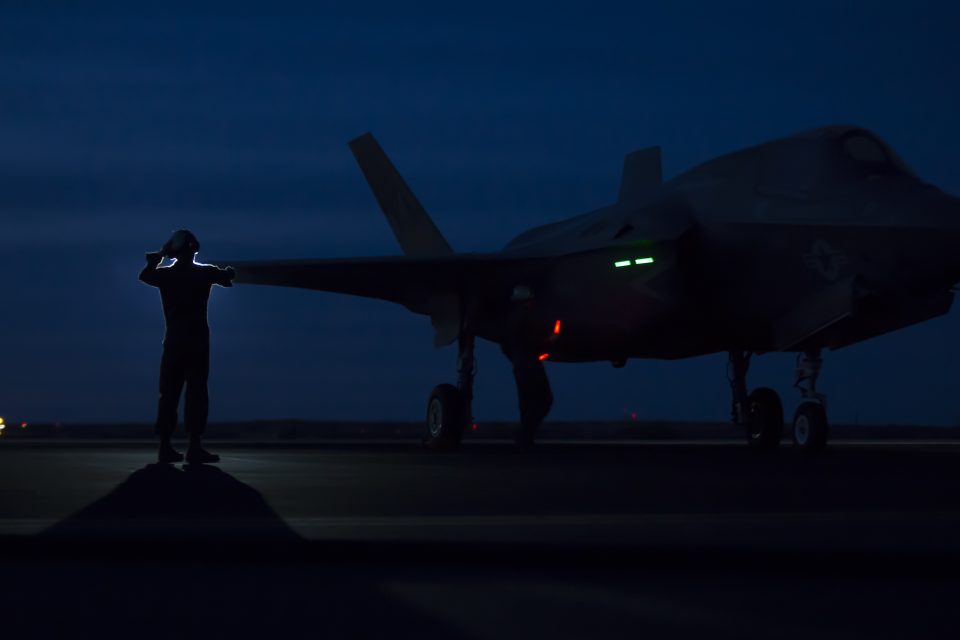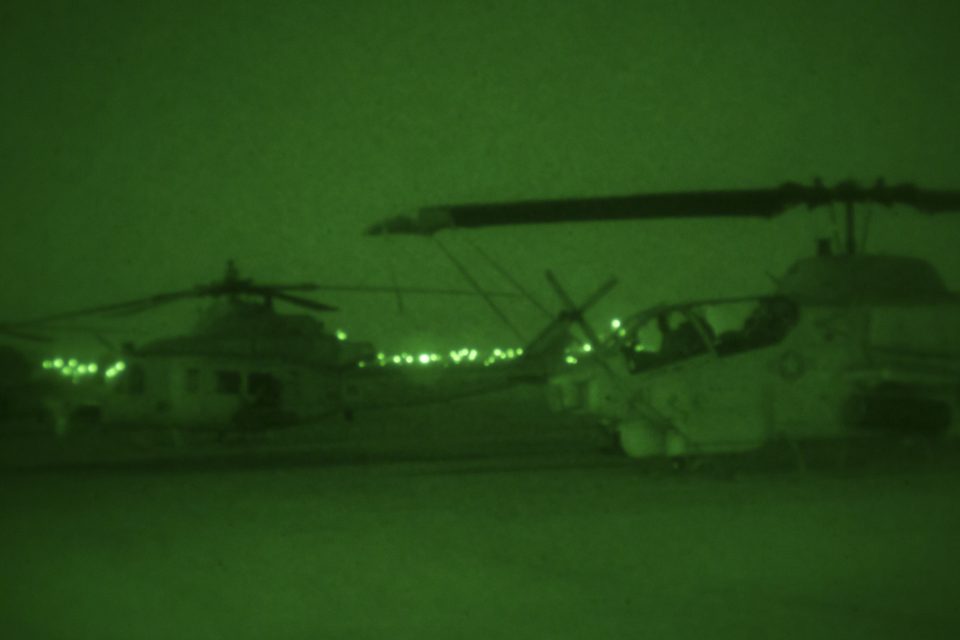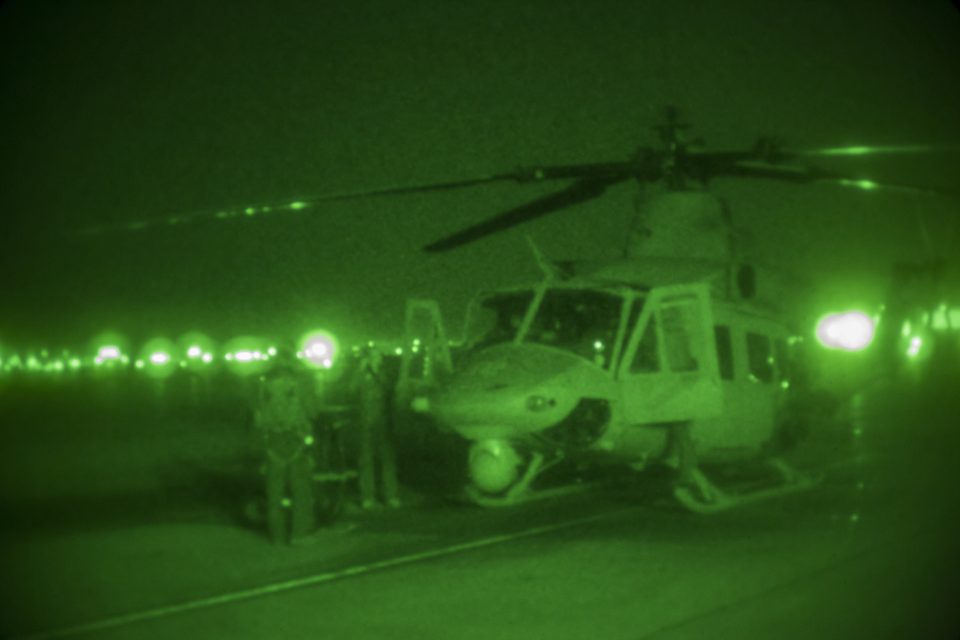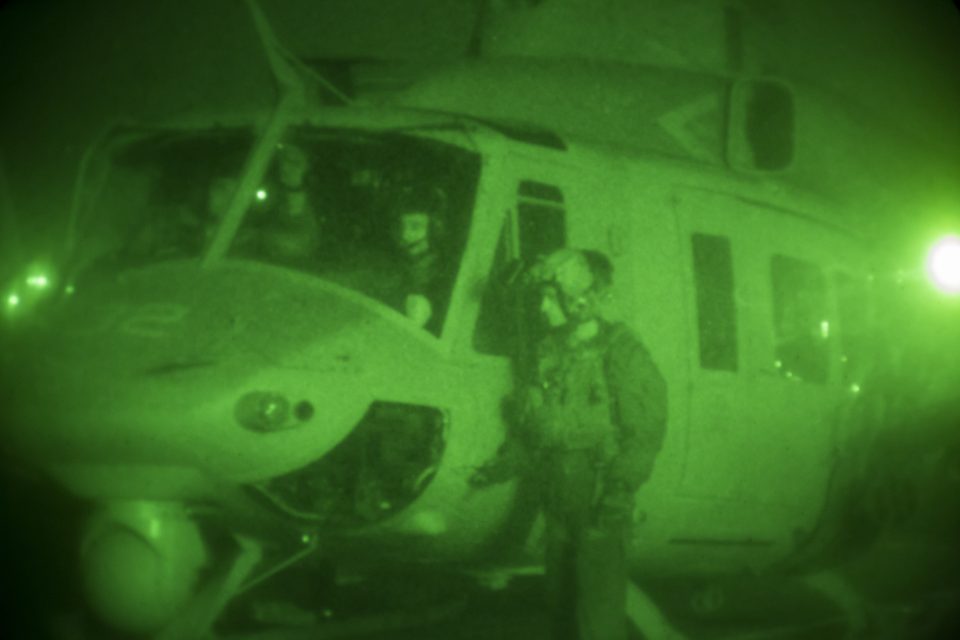By Robbin Laird
What was clear from my visit to MAWTS-1 and getting a chance to look at the work of the latest WTI is that the Marines are working ways to enhance the combat capability of the MAGTF but in a way that can reach back to joint assets and shape evolving capabilities.
Enhancing the combat power of the MAGTF is unfolding as the reach of the MAGTF is extended back into the air and maritime strike capabilities of the joint force.
I have visited VMX-22 in the past, and VMX-22 played a major role in introducing the Osprey to the Marine Corps and shaping operational concepts for the use of the Osprey.
With the coming of the F-35, VMX-22 has become VMX-1, and has generated a broadening of the aperture of what the new combat air assets can do in the process of the transformation of the MAGTF and its reach back as well.
The CH-53K will soon come into this transformation process and will both contribute to and leverage the overall process of change.
Next up will be new remotes, including a Group 5 UAS, which certainly will enter the universe of VMX-1 at some point.
In a 2016 visit to Yuma, Ed Timperlake and I had a chance to talk with the first Commanding Officer of VMX-1, Col. George Rowell. In effect, what VMX-1 focuses upon is testing and working TTPs for aviation modernization for the USMC, with the F-35B as the latest key driver for change.
And later that year Todd Miller of the Second Line of Defense team visited the USS America to get updates on the ACE working onboard the new LHA and preparing for the future.
https://sldinfo.com/2017/09/uss-america-flight-ops-at-sea/
https://sldinfo.com/2016/12/the-moment-pilots-first-realized-the-f-35-was-something-extraordinary/
https://sldinfo.com/2016/11/the-next-phase-for-the-f-35b-empowering-the-sea-base/
During this visit to Yuma in May 2018, I had a chance to talk with several members of VMX-1 during a roundtable discussion. Here we focused on an update on the Osprey, on the ongoing work with regard to the F-35B and the core effort to shape a digitally, interoperable MAGTF.
Currently, VMX-1 owns six F-35Bs with two in depot maintenance at Cherry Point and second undergoing modifications at Edwards AFB. Two of the officers at the roundtable have extensive experience working with the aircraft.
Major Brendan Walsh who has been flying F-35Bs since their standup at Eglin AFB provided an overview on the aircraft within MAGTF operations. He served as the operations officer for the Green Knights and worked their preparation for deployment to Japan. He now is leading the Marine Operational Test & Evaluation Squadron 1 F-35B Detachment at Edwards Air Force Base, CA., under the command of Col. Rowell. Major Walsh had just under 600 flight hours in the F-35B when we discussed his work during the roundtable.
A second Marine who discussed the F-35B from a strong basis of experience working with the aircraft was Major Paul Wright. Major Wright was originally a F-18 pilot but has worked through training and related F-35 activities to become a test pilot with VMX-1.
Major Walsh worked DT-3 as well where 12 F-35Bs operated with Ospreys onboard the USS America and supported assault operations in the San Clemente Island test area.
They underscored that the Osprey working with the F-35B enabled an ability to insert force into hostile areas of the sort being prioritized now with the strategic shift underway.
Given my recent visit to the UK and discussions at Marham and Portsmouth, I discussed with them their working relationship with the Brits. Not surprisingly, the two pilots emphasized the close working relationship but in so doing underscored a core point about the F-35 operating community worldwide.
As Maj. Wright put it: “I see the Brits on a daily basis at Edwards.”
It should be noted that at Edwards all three US services flying the F-35 as well as the Brits and Dutch work with the USAF Test Squadron.
And as Maj. Walsh added with regard to their work experience at Edwards, “We fly together regularly and work together closely as well.
“It is great to work commonality and to understand differences as well with how the partners and the services are working the airplane as well.”
The aircraft is a flying combat system with significant C2 and ISR capabilities.
And a clear challenge is task management with the aircraft as opposed to sensor management, which is what a legacy multi-mission fighter will focus upon.
As a multi-domain fighter, the focus of the information generated and displayed in the cockpit is about allowing the pilot to task manage and enable other fighters to be more lethal and survivable.
As Major Walsh put it: “With legacy platforms you would have one piece of the situational awareness puzzle and have to rely on other platforms to direct you.
“And we elevate the team operating around us.”
Major Wright added: “There is a culture or mindset change for the F-35 pilot compared to a legacy pilot.
“You work with the key information for the combat situation and can choose to employ your weapons, both lethal and non-lethal, against a target, or pass that information on and employ another asset in the attack phase of the OODA loop.”
Major Walsh then added with regard to his Red Flag experience in 2016: “If you look at what Vipers can achieve with and without the F-35, the difference is dramatic.
“You will find a lot of legacy platforms very happy to operate with F-35s for sure.”
One aspect of the Osprey working together with F-35s is the ability of the MV-22 to tank the F-35s, which provide a significant capability notably when operating off of ship or operating ashore in assault operations.
At MAWTS-1, they are working the STOVL distributed operations piece as well.
They have worked with the MV-22 providing the support last year, and at the last WTI, they used the C-130.
VMX-1 is clearly involved with shaping the TTPs for this operational capability.
The Marines initially worked the IOC support for the F-35, now they are working on leveraging the aircraft in its current configuration for the MAGTF and will spend the next couple of years working with the next iteration of the aircraft, the 3F software configuration and winging out its capabilities, notably for the Ground Combat Element.
The 3F will allow the aircraft to work with externally loaded ordinance for operational situations in which Low Observability is not the primary aspect of what is being required from the aircraft.
And while they are doing that, in the words of Major Wright, there will be a lot of “side projects’ with regard to leveraging the F-35 for the MAGTF as well.
With regard to the Osprey, the air system has evolved from the VMX-22 role of getting the aircraft into the force, to reworking the con-ops of the MAGTF leveraging the aircraft, to modifying aspects of the aircraft and its operations to optimize force insertion, to reshaping the aircraft to become a key part of the digital interoperability effort within the USMC.
Major Duchannes and Maj. Ryan Beni, also an MV-22 operator since 2009, and a Marine I had met earlier during a visit to Marine Corps Air Station New River, noted that the MV-22 has gone through several upgrades over the past few years, including upgraded communication systems and a new defensive weapons system.
“We are now working our way into the whole digital integration realm, so that we can empower the MAGTF more effectively as well as the Joint Force.”
The Osprey pioneered what might be called digitally enabled force insertion with the introduction of the MAGTAB into the squads operating on the Osprey and having the situational awareness to understand what had changed in the objective area during a long flight on Osprey to the objective area as well.
And working that digital interoperability piece is crucial for the F-35 as well as the Marines work the gateways and message systems to get benefit from the F-35 as it operates as a forward combat system enabling MAGTF operations.
This is a work in progress but a central focus for MAWTS-1 and VMX-1.
Editor’s Note: In this 2016 USMC story about the role of Marine Operational Test & Evaluation Squadron 1 F-35B Detachment at Edwards Air Force Base, CA in 2016 testing, a good sense of what the Detachment does is provided.
Three F-35B aircraft and 75 U.S. Marines from Marine Operational Test & Evaluation Squadron 1 F-35B Detachment at Edwards Air Force Base , CA, along with 21 test personnel from the JSF Operational Test Team at Edwards deployed to Eglin AFB, FL., from August 9 to September 1, 2016 to complete Operational Test missile shots of the AIM-120 Advanced Medium-Range Air-to-Air Missile.
These employment scenarios differed from those conducted in Developmental Test in that they were specifically designed around operational employment scenarios with the aim of further validating and developing tactics, techniques, and procedures for all three variants of the F-35.
“Due to the commonality of the F-35 mission systems and weapons, everything we learned during this detachment directly translates to combat capabilities for the Marine Corps, our sister services, and partner countries,” Lt. Col. Richard Rusnok, VMX-1 F-35B Detachment Officer-in-Charge, said of the test missile shoot.
The detachment completed multiple engineering runs in preparation for the expenditure of five AIM-120 missiles and one Guided Bomb Unit-12 LASER guided bomb. The operational test team developed complex air-to-air and air-to-ground scenarios and the F-35 weapons system performed as expected to deliver weapons on target.
On day one of live fire testing, the team was able to shoot two missiles on two separate test set-ups within 12 minutes – an exceptional level of efficiency in a test environment. Another test mission involved an F-35B dropping a GBU-12 and supporting it with LASER guidance while simultaneously engaging a QF-16 drone. Both weapons successfully guided to their targets.
“This was a phenomenally successful deployment that was made possible by the close coordination between the JSF Operational Test Team, U.S. Air Force, Navy, Marine Corps and industry,” Rusnok said.
During the past year, VMX-1’s F-35B Detachment has been involved in multiple high profile events including:
- Block 2B, 3i, and 3F Developmental Test support
- Block 2B Air-to-Surface Weapon Delivery Evaluation Global Position System testing
- A deployment to the United Kingdom in support of the Royal International Air Tattoo and Farnborough International AirshowUpcoming events for VMX-1’s F-35B Detachment include:
- Naval Integrated Fire Control – Counter Air testing
Developmental Test Period 3 aboard USS AMERICA
“I want to congratulate the VMX-1 / JOTT team that did a magnificent job planning and executing this OT missile shoot,” Col. George Rowell, VMX-1 commanding officer said. “ It is a huge achievement for the squadron and the F-35B program. We look forward to many more opportunities to provide positive impact.”
Marine Operational Test & Evaluation Squadron 1 is charged with testing the full range of Marine Aviation Combat Element (ACE) Operational Test and Evaluation including MV-22, CH-53E/K, F-35B, UH-1Y, AH-1W/Z, Command and Control Systems, and Unmanned Aerial Systems. VMX-1 is headquartered at MCAS Yuma, AZ, with detachments at Marine Corps Air Station New River, NC… a nd Edwards AFB, CA VMX-1 was formerly called VMX-22. The squadron’s name changed on May 13, 2016.
An additional story published by the USMC which highlighted comments made by Major Walsh revolved around the participation of VMFA-121 in a 2016 Red Flag.
Six F-35B Lightning IIs with Marine Fighter Attack Squadron 121 participated in Red Flag 16-3, making it the first time in history that the fifth generation fighter has taken part in the three-week long exercise at Nellis Air Force Base, Nevada.
Red Flag is a multiservice air-to-air combat training exercise including the Army, Navy, Air Force and the Marine Corps.
According to Lt. Col. J.T. Bardo, commanding officer of VMFA-121, this is the first exercise of this magnitude that the F-35 has participated in and serves as a valuable training opportunity for the squadron.
During the training, VMFA-121 conducted defensive and offensive counter air exercises, strategic attacks, targeting, and combat search and rescue training.
“We’re really working on showcasing our surface-to-air capabilities,” said Maj. Brendan Walsh, an F-35 pilot with VMFA-121. “The F-35 is integrating by doing various roles in air-to-air and air-to-ground training.”
The F-35 is equipped with an integrated sensor package more powerful than any fighter aircraft, also combining radar-evading stealth with speed and fighter agility.
“With the stealth capability, the biggest thing that this aircraft brings that the others do not is situational awareness,” said Walsh. “The sensor sweep capability that the F-35 brings to the fight, not only builds those pictures for me, but for the other platforms as well. We’re able to share our knowledge of the battle space with the rest of the participants in order to make everyone more effective.”
Red Flag 16-3 has roughly 3,500 service members involved for the entire exercise. The training scenarios require all the branches to come together, which is extremely common in real-life battle scenarios.
“These opportunities to operate in a joint environment with our partner services are rare,” said Bardo. “We’re excited to be here, to bring the F-35 to the exercise and capitalize on all its strengths and integrate with the other players out there.”
The featured photo shows VMFA-121 bringing F-35B to Red Flag 16-3 for first time.
Pilots with Marine Fighter Attack Squadron 121 exit F-35B Lightning II’s after conducting training during exercise Red Flag 16-3 at Nellis Air Force Base, Nevada, July 20, 2016. This is the first time that the fifth generation fighter has participated in the multiservice air-to-air combat training exercise
The first slideshow highlights the Marines working distributed STOVL operations. The second slideshow highlights VMX-1 supporting training for night operations.


